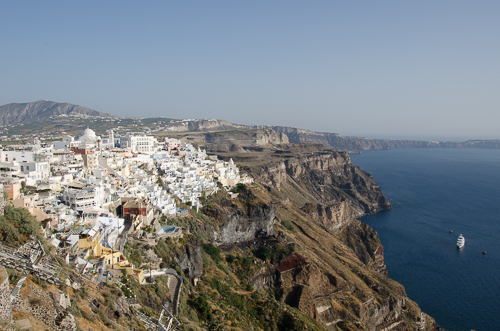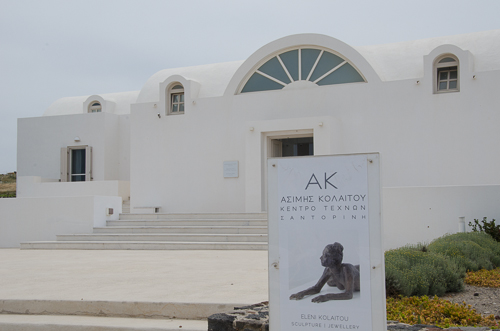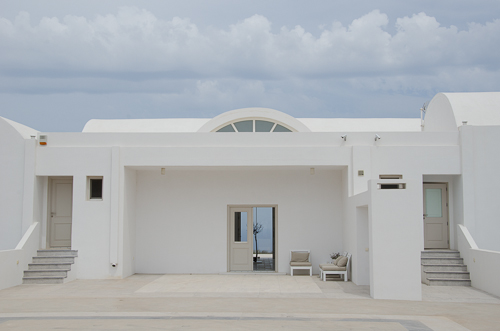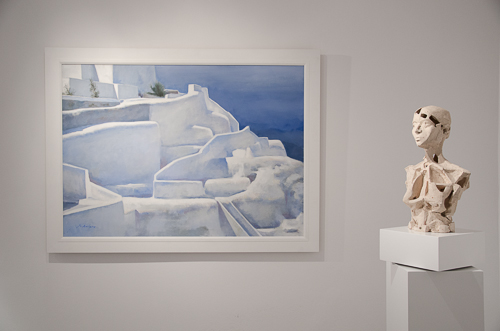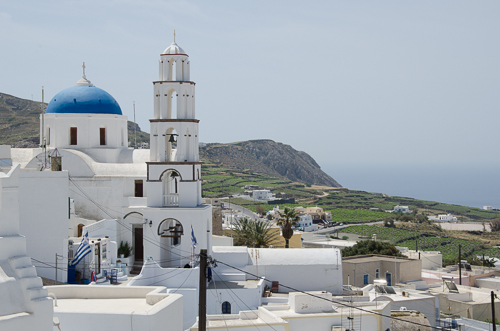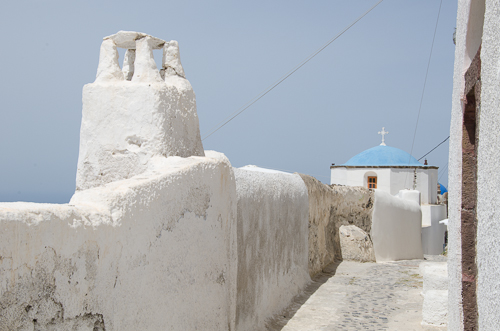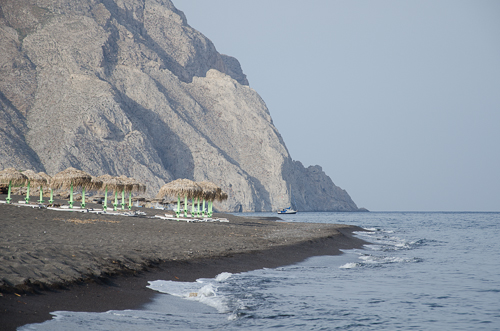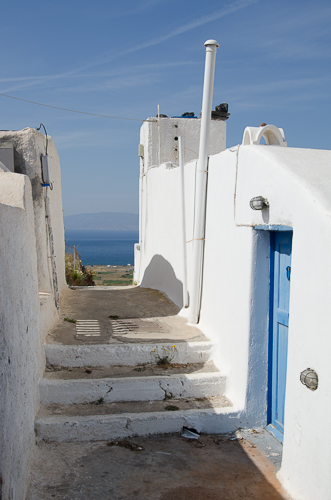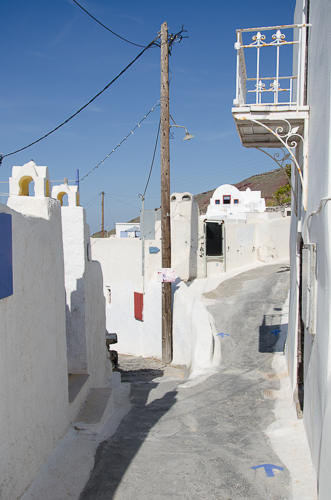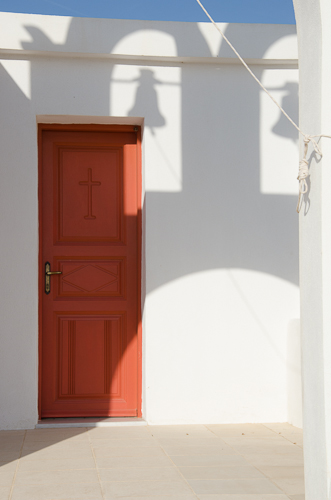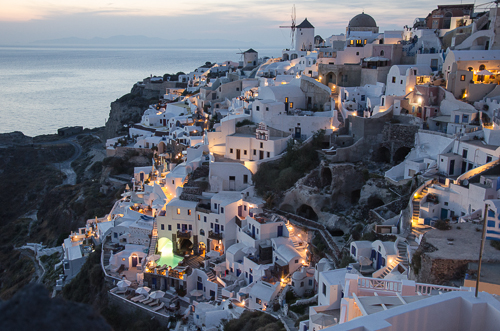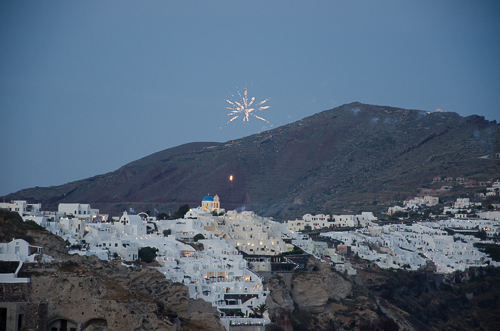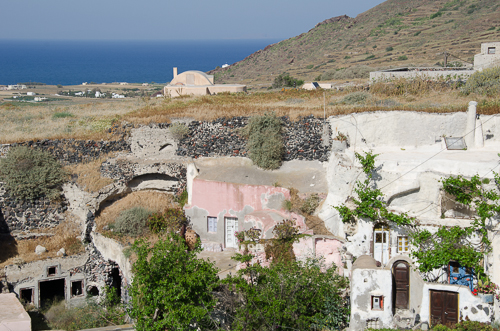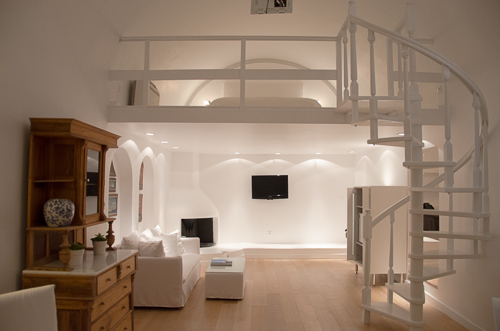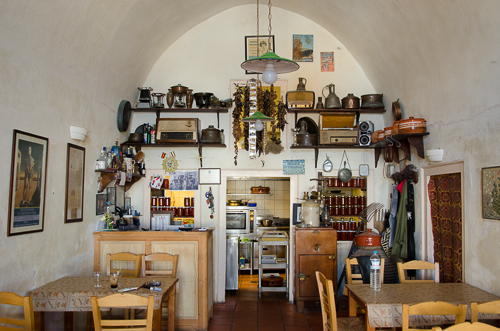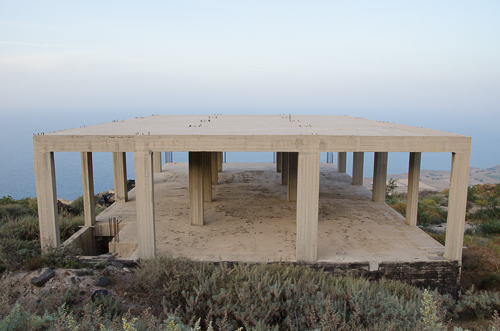Firá covers Santorini island’s volcanic edge with layer upon layer of hotels, cave apartments, infinity pools and swish restaurants, all backed by a warren of narrow streets lined with bars and shops. It is a vision of dramatic cliffs and low-lying cubical buildings made of whitewashed local stone.*
The town’s small scale doesn’t deter the cruise ships from all over the Mediterranean and Aegean seas that descend upon the Old Port. Its central location makes it a good base to access many other parts of the island. Fortunately, in the early evening the multitude of passengers return to their vessels and the local restos and cafés taken on a more relaxed atmosphere.
Built on the edge of a 400m high caldera on the crescent-shaped island’s western side, Firá is accessed from sea level by a cable car, donkey ride, or by foot (587 steps) along a meandering rocky path (trafficked by donkeys).
Christoforos Asimis is regarded as one of the island’s most significant artists. For seven years he created luminous religious paintings that fill the interior of Firá’s Cathedral after it was rebuilt following the area's major earthquake of 1956.
The newly established AK Asimis Kolaitou Art Foundation (pictured below) brings together the work of the revered Santorinian artist as well as that of his partner, Eleni Kolaitou (sculpture & jewellery).
Located on the main road from Firá to Pyrgos, the gallery opened its doors early this summer. Designed by son Katonas, who also exhibits his paintings on site, the building features the artists’ residence, studio, and indoor exhibition spaces as well as outdoor venues for music, drama or various performance art events. I had the unique opportunity to interview the family of artists. Here is a video showcasing some of their work.
Christoforos Asimis’ paintings (above) explore the magnificently changing light and landscape of the artist’s home town. It is not difficult to find a lifetime's worth of inspiration here. Island bliss.
*or limewashed with various volcanic ashes used as colours


